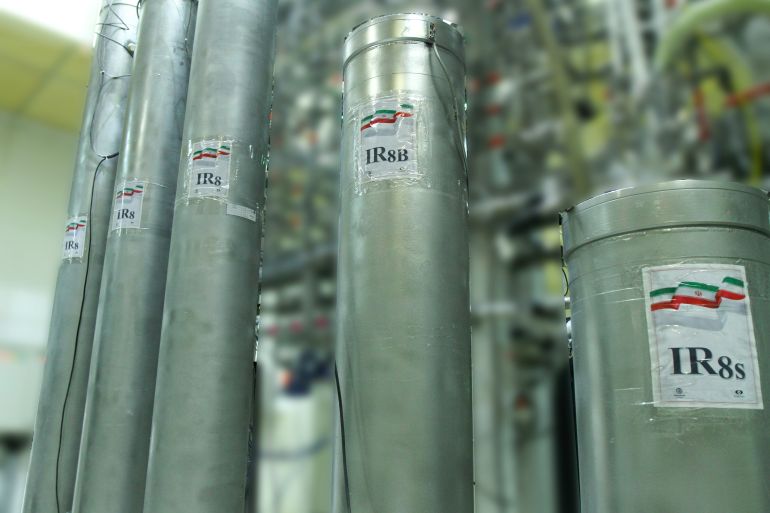Iran’s low-enriched uranium stockpile 12 times beyond limit: IAEA
A report by UN’s nuclear agency says that Iran had a stockpile of 2,442.9kg compared with 202.8kg allowed under 2015 nuclear deal.

Iran has stockpiled low-enriched uranium 12 times more than the limit set by a nuclear accord, while it also failed to provide a credible explanation about the presence of nuclear material in undeclared sites, according to the United Nations’ nuclear agency.
The findings were reported by the International Atomic Energy Agency (IAEA) on Wednesday in a confidential document given to member countries and seen by news agencies.
Keep reading
list of 3 itemsUS imposes Iran-related sanctions on 6 firms, 4 people
Iran’s Rouhani says Trump administration ‘abjectly struck down’
As of November 2, the nuclear watchdog said that Iran had a stockpile of 2,442.9kg (5,385.7 pounds) of low-enriched uranium, up from 2,105.4kg (4,641.6 pounds) reported on August 25. The nuclear deal Iran signed in 2015 with world powers allowed it only to keep a stockpile of 202.8kg (447 pounds).
The IAEA reported that Iran has been continuing to enrich uranium to a purity of up to 4.5 percent, higher than the 3.67 percent allowed under the crumbling accord.
The document also stated that Iran’s explanations over the presence of nuclear material at an undeclared site in the country were “not credible”.
Despite Iranian authorities providing some information about the site, “the agency informed Iran that it continues to consider Iran’s response to be not technically credible,” the report said.
“A full and prompt explanation from Iran regarding the presence of uranium particles of anthropogenic origin … at a location in Iran not declared to the Agency, is needed,” it added.
The landmark nuclear agreement, officially known as the Joint Comprehensive Plan of Action (JCPOA), was signed to curb Iran’s nuclear activities in exchange for sanctions relief. The goal was to prevent the country from building a nuclear weapon, something Iran has insisted it does not intend to do.
The Iranian government began scaling back a number of its JCPOA commitments following President Donald Trump’s decision to unilaterally withdraw the United States from the accord in 2018, and the subsequent failure by its European signatories – France, UK and Germany – to secure Iran the economic benefits it was promised under the deal.
Iran has been allowing IAEA full access to its nuclear facilities after announcing in August it would permit inspections to two sites previously blocked.
Tensions between Washington and Tehran increased as the US enforced its so-called “maximum pressure campaign” following its JCPOA exit, re-imposing punishing economic sanctions that have squeezed the Iranian economy and led, among other things, to soaring inflation and shortages of medicine.
A change in the two countries’ nuclear diplomacy could be in sight as US President-elect Joe Biden has promised he would offer Iran “a credible path back to diplomacy”, marking a stark change in Trump’s aggressive rhetoric against Iran.
Analysts, however, expect both Iran and the US to proceed cautiously in the early months of a Biden presidency, with some saying the two countries could reach a “freeze-for-freeze” interim agreement in 2021, likely in the second half of the year, while broader negotiations will likely have to wait until 2022.